How to take a sabbatical
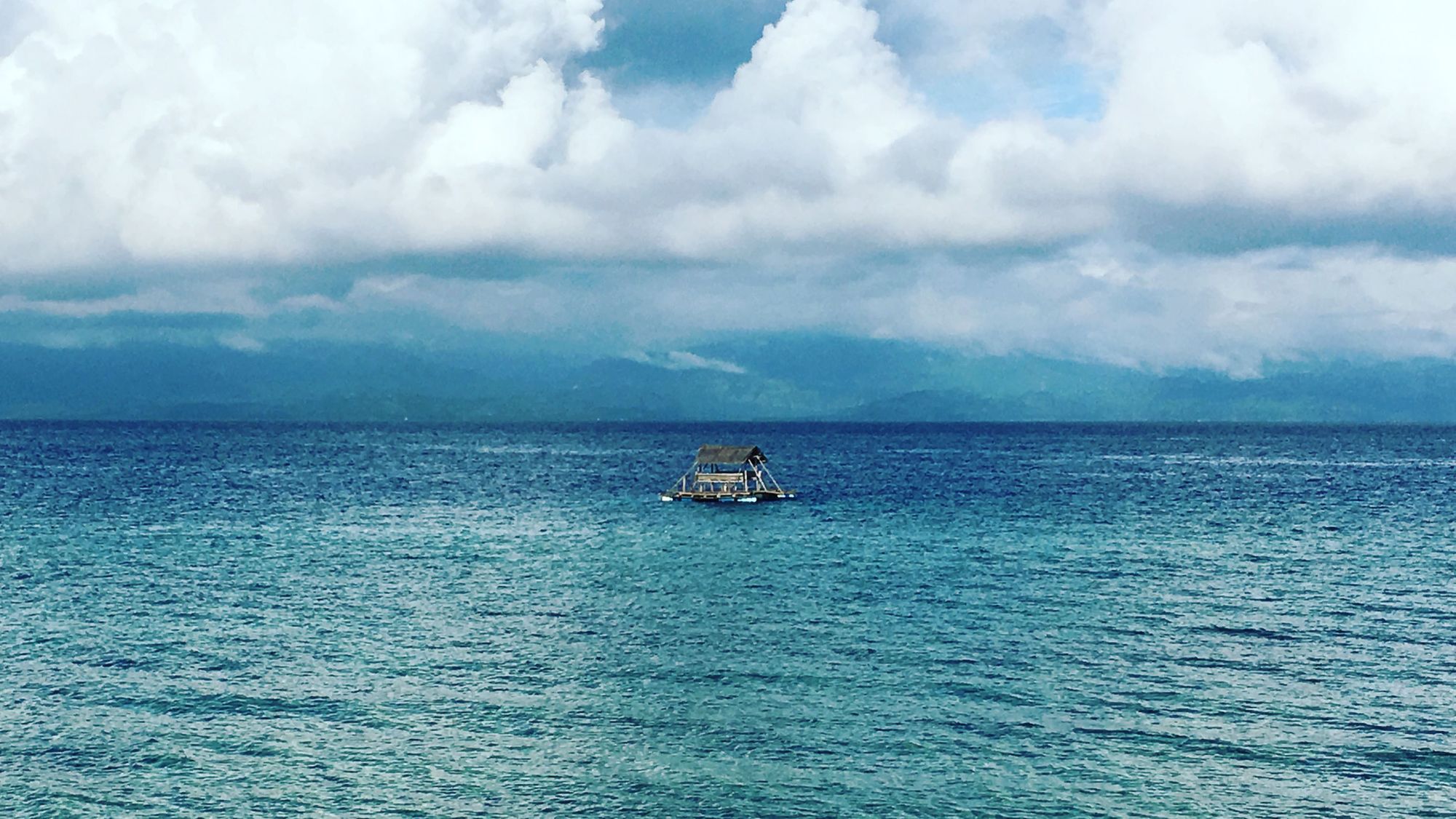
This won’t be like every other blog post about travel.
Your narrator won’t be casually doing something awesome when suddenly there is a life-changing revelation. That’s not how life actually works.
This, instead, is an essay about something harder than sitting on a beach and Instagramming about it. This is about blowing your life up, analyzing each piece, and then putting it back together again.
It’s about leaving your life behind, yes, but intending to come back to it after some time away. This is a post about sabbaticals and how they are becoming a linchpin of the wandering career path for those privileged enough to be able to take them.
The sabbatical, typically the realm of academics and over-worked executives, is becoming mainstream. Or it least, it’s becoming easier and a more realistic possibility.
Episodic careers, nomad-friendly jobs, an increasingly accessible travel infrastructure, and the lack of loyalty incentives for knowledge workers has made the long-term career break increasingly common. Companies like Automattic, Adobe, and McDonalds even offer a month-long sabbatical to longtime employees. So if you’re daydreaming about packing your bags and heading anywhere to reflect and recharge:
You’re not alone. And you’re not crazy. And it is possible. But it’s hard.
The sabbatical differs from a “vacation” or “time off.” It has a goal. One who takes a sabbatical is doing to so work on … something. Sometimes it’s a company or a book. But in most cases, the sabbatical is taken to work on the very person taking the sabbatical. It’s a turn inward and a chance to do some mental accounting.

Kill me.
Despite sabbaticals becoming more common (and needed) those that embark upon them typically have to figure out how to best use their time on their own. Or worse, wade into the scammy content cesspool that is the travel blogosphere / travel vlogger community.
The best serious sabbatical takers have is to pack a copy of Vagabonding, or a stack of business books, and to hope the free time jiggles loose some hidden insight.
We can do better. And this is my attempt to help.
For this blog post, I spoke to a handful of people who embarked on their own sabbatical with one question in mind: How can we make the most of this career break? How can we come back to “normal” life recalibrated and renewed? What would you tell someone doing this for the first time?
Consider this a cheat sheet. And the start of a conversation. (If you’d like to stay updated as I continue to explore this topic, sign up for my newsletter.)
I write this not to tell you about where to go or what to do. But how to think about your own version with some guidelines. A sabbatical is a personal journey, and is fraught with all of the unique attributes of your own life and ambition. There is no recipe. But there may be a framework. And this is the list I wish I had for my own version of this.
Insight #1: You are creating a new map.
When it comes to the reflection required for a successful sabbatical, many people I spoke with used the metaphor of adding nodes to their network or ingredients to their kitchen. Here let’s try it: Think of the elements in your life like a Chipotle menu. The beans are your job. The tortilla is your house. The rice is your hobby. The emoji person is you.

Right now, maybe your life is like a nice burrito. Your job and house and friends all fit together just so. And it’s pretty great. But eventually you realize a burrito is maybe not the best way to arrange your tortilla, cheese, beans, rice. So you combine it into other things. Hey, remove the rice (your hobby) and you have a taco (and a new weekly schedule)!
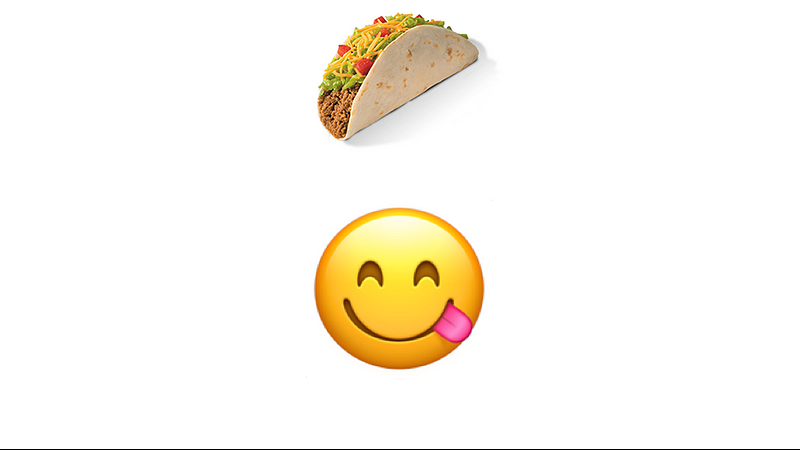
Melt the cheese on the tortilla and you have a quesadilla!
But alas you realize, your life is only the same set of ingredients. There’s a whole wide world out there and you’re ready for something a new (especially after seeing some friends try some new dishes). You need to change the elements that make up your life. So you walk out of the Chipotle.

Whoa, there’s an entire strip mall of options! You can get pizza. Or Chinese. Why didn’t anyone tell me I could make things with pepperoni? Or hey, you can even combine items from a grocery store with the Chipotle and, oh man, you created an entirely new dish you (or your parents, or your coworkers) never would have dreamed of.
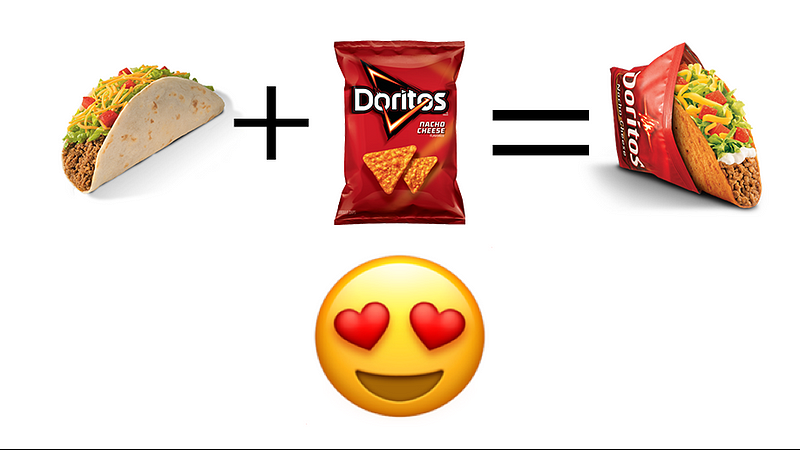
A sabbatical is the act of finding more ingredients for your life. Of stepping outside your own mental Chipotle confines and seeing what else you could be eating for lunch. Of hoping to find your own personal Doritos Locos Taco. Sometimes that’s additive (“What happens if I were to start working out more?”). Sometimes it’s subtractive (“You know what, I actually don’t even like the industry I’m in!”).
On your sabbatical, you aren’t quite sure what’s out there or what you could even make. But you know that new ingredients and new restaurants enable to you maybe create some different dishes. That means trying some new dishes — which means doing things you wouldn’t normally, going places you’d never go, and talking to people you wouldn’t normally talk to.
This is why there can be no linear “path” or “progress” in the way we normally think of things (you hear that, you Type-A’s out there?). There is no direction. There is only discovery. Especially at first.
“It was the psychological equivalent of shock and awe. It took a couple months for me to feel like I had enough mental space to ask myself questions like, ‘Is this the career I want? Is my life heading in a direction that makes sense? How many of my goals are actually intrinsic and how many of them are the result of external social norms?’ It’s hard to evaluate your own life on first principles if you’re always caught up in the day-to-day.” — Eliot Peper
Insight #2: Be ready for “the thrash”
To go on a sabbatical is to peel away layers of your identity. Think of things you spent most of your waking hours on…
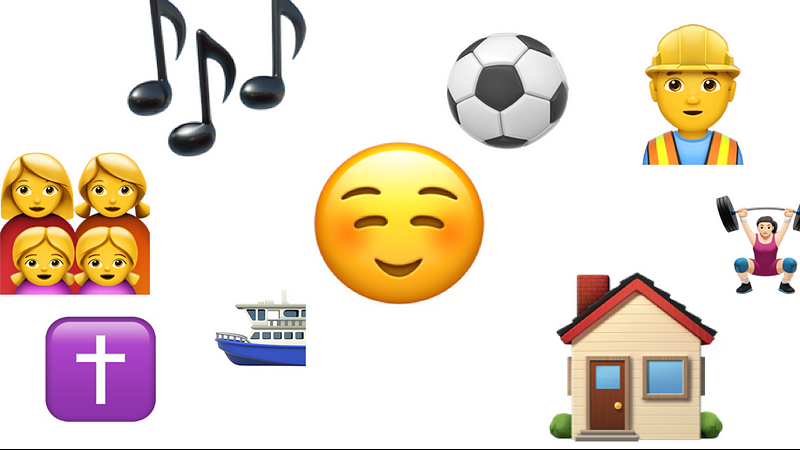
These are your routines, your work, many of your friends, your local city — they will all be gone.
And when you do that, all you are left with is… you.

You’ll realize how much of your self confidence came from work or the gym. You’ll see how much the way you view your self comes from the fact that you’re a “designer” or a “churchgoer” or a “weekly Sunday brunch host.”
The fact that you are able to take a sabbatical means you have enough money and are good enough at something to give you a bit of an ego. But for this trip, that person who is “good at something” is no longer you. It’s just part of you. And you’ll have to let that part go (for now). And it will feel like starting from scratch. And it will feel like you’re giving up all the “progress” you’ve made.
You’ll see how much of your identity wasn’t really you but your friends or your political leanings. It may scare you. You’ll be forced to stare into your own internal abyss. The good news? That’s the point. By searching deeply, you’ll see some hidden motivations and desires. And that’s how you can begin to chart a new path, true to your internal self. That’s how you get more ingredients for your recipe. But it requires turning over some rocks and being okay with the absence of identity. It’s like being stuck in a waiting room with no magazine and no cell phone. It’s just you in there.
Nearly everyone I spoke to had some version of this hit them after the thrill of novelty wore off. Unfortunately, going through “the thrash” can take some time:
“By month three. I thought, ‘Okay, this is empty, I need to be productive in some way. And then I was talking to a friend of mine … and she says, ‘oh no, no, four months is when you just start to awake. You’re just starting to get rid of all of the bullshit and the anxiety that’s residual from the previous thing you were doing. You’re just starting to wrap your head around your new state placing the new dots. We’re going let them connect later on.’ And to me, that’s what growth feels like.” — Elena Manho
Insight #3: Release your “curiosity constipation”
Pre-sabbatical, you probably had a constellation of half-interests, possible business ideas, and curiosities. Tina Roth Eisenberg, founder of Tattly and Creative Mornings, once said “I have a rule: If I keep complaining about something, I either do something about it or let it go.”
The sabbatical is the time to do something about all of the loose ideas you have in your head. What is typically seen as burnout or aimlessness is often just the back up of possibility in your own mind. So tackle your ideas head on, dance with them, and be prepared to quickly dismiss them.
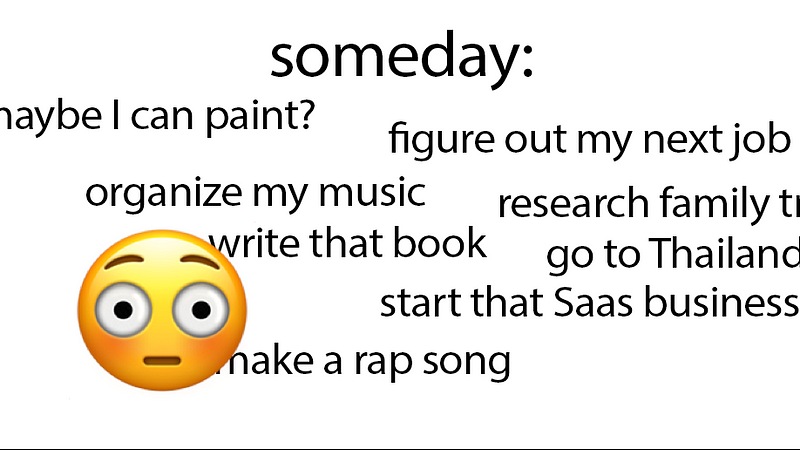
Doing so creates room for new ideas and removes previous hangups. My personal example: I had long been obsessed with automation as a threat to “modern” careers. I toyed with starting a website preparing people who were also obsessed with this. A sort of “career bomb shelter” where people would learn to survive the coming cataclysm together.
During my break, I read several books about the pending robot revolution as well as analyzing the predictions of past generations. I spoke with people who agreed and disagreed with me via Skype. This process forced me to confront if I was really interested in such a thing, and if I was willing to dedicate a large portion of my professional life to this idea. I ultimately decided “no” (being the career equivalent of a Doomsday Prepper didn’t sound fun).
But it wasn’t a loss. I tried not to feel “stalled.” (Remember, this process is not linear. It is an exploration). The freedom from removing the idea from my daydreams was incredibly liberating and allowed me to tackle other items. And the people I met while exploring that idea became my friends and future collaborators.
“I worked on my first novel during the trip, but it was a passion project, not a source of income.” — Eliot Peper, who now is on book six and was just featured in the New York Times.
Insight #4: You may have the instinct to plan this like a vacation. Don’t do that.
Chances are, when you’ve traveled in the past it was for a vacation: a finite period time designed to maximize your exposure to a certain place. And in that framework, the idea of returning home without experiencing X or Y would be devastating. The concept of traveling somewhere just to sit around (and doing something you could be doing at home) may give you shudders, sure. But a sabbatical can’t just be a longer vacation.
Your brain needs empty thoughts and moments to connect the dots and work out the new information you are introducing it to. Your mental cupboard needs to clear space on the shelves for more life ingredients. Imagine your brain as a shelf. And it’s pretty full. This was fun for a while, but you’re feeling cluttered, frazzled, and you get the sinking feeling you don’t need all of this stuff.
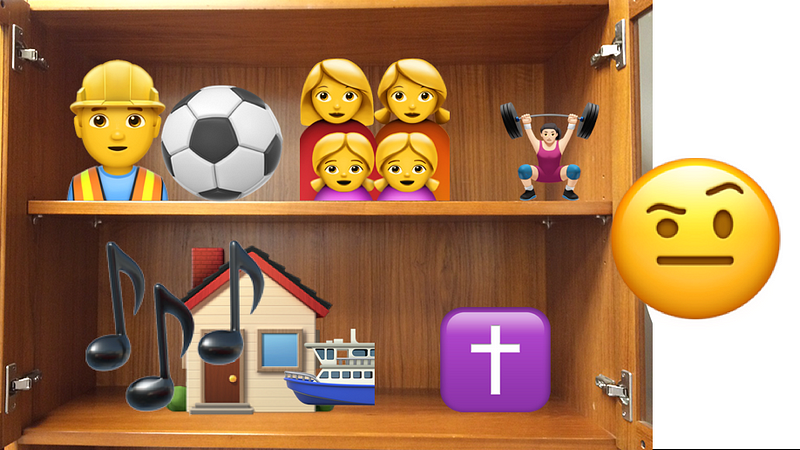
Instead, consider that you are just living your life, but over there. You need to take some things off the shelf and test putting new things in there. And If you spent every waking moment at home visiting museums, eating out, and taking tours people would think you were insane and you would be too exhausted to do anything else.
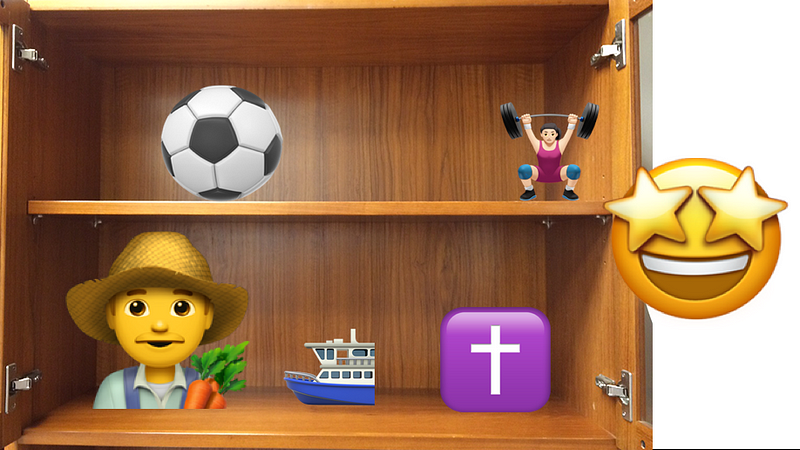
Every place you visit will give you a different energy. It will help you see your shelf in different ways. And if you don’t sit and internalize that, you might as well be on your couch.
“Your brain is working without you necessarily realizing it. You need the rest and you need the leisure and you need to give yourself the chance to feel lazy. I needed to know that, as a justification that the path I was trying out of just letting things be was worthwhile.” — Elena Mahno
Insight #5: You won’t do this alone. Much of your progress will come through people.
I used to have a strong belief that if I just sat in a cabin in the woods for a few weeks I’d make great progress on whatever project was on my mind. That all of this distraction was holding me up. And if I just had some peace and quiet and get my best work done. That was a lie I was telling myself.
Most of the people I spoke with talked about reaching out to friends and friends of friends with what they were thinking about and interested in. They then set up coffee meetings, Skype calls, and email threads with those people. And those people open up pathways to things you won’t consider on your own.
For example, you musing about a future career in real estate can lead directly to you talking to veterans of the industry (who are happier than you’d think to answer all the questions you have). Or if you’re thinking of finally shooting that short film, you can use the time to get connected to people who’ve seen 100 of them. Or who are in the middle of making them. Or can highlight the industry standard reading list for you to a develop common language to discuss your ideas. Remember: The goal is to get more ingredients for your recipe. And to do that you have to listen to what other people are also seeing.

“And it always starts with reading, reading, reading, reading. Then it’s let’s look up this and this and this and this. … Then I am literally Googling things. And then I’m reaching out to people asking, ‘Hey, do you know anybody who does this? Can I talk to them?’ Now have more information than just my own perception.” — Elena Mahno
Insight #6: The distance from your “normal life” will make you realize what you miss and what you don’t.
In the best seller The Life Changing Magic of Tidying Up author Marie Kondo has an unorthodox approach to cleansing your home of clutter: Go room by room and remove everything. Take every piece of clothing out of the closet. Dump out every drawer. And assess it one at a time. So let’s try that.
Pretend all the important elements in your life are “items” in a pile. If you’re a crazy person like me you may take to writing them down.

Oh wow. I have so many things in my life to sort through. This will be tough.
Place all items on the metaphorical floor. Then go item by item, hold it in your mind’s eye, and decide if the item still “sparks joy.” If yes, keep. If no, “Thank it for its service” and discard. A silly but powerful premise.
By removing all your items from their context and viewing them critically, even for just a moment, you are forced to decide their value to you.
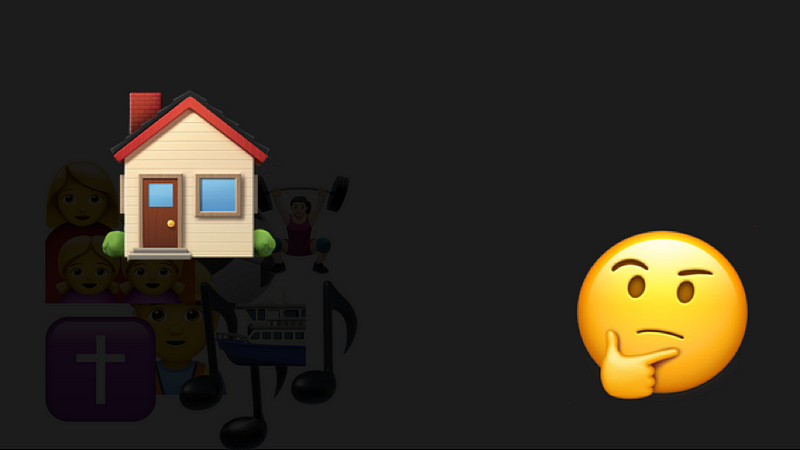
Do I really need to own a home to feel like I’m at my best? Does it spark joy?
And ultimately, you’ll be surprised at the items you haven’t seen in years that you totally forgot. Or the items you realize you use only because they are visible to you on a daily basis. And at the end of the process, you are left with only what you need and what makes you happy.
The same phenomenon will happen during your sabbatical. After stepping away, you’ll realize you do, in fact, need to see your grandparents every so often to feel happy. Yes, you actually do miss the TV shows you watch every day back home. Though, now that you think about it, your identity as someone who loves ice cream wasn’t because you actually enjoyed it. But because it was a habit.
This is uncomfortable and will force you to discard parts of your life that were previously “just part of who you were.” Let these things go and see how it feels. You can always pick them back up again.
“Last night, I wrote at least 25 different tag lines for my Linkedin and couldn’t decide on one. So I just decided, I’m just going to change it every two weeks. People will come across my profile and sometimes they’ll say, ‘oh yeah, this makes sense!’ While others, ‘I have no fucking idea what she does. It does not make any sense.’ That’s part of the reflection.” — Elena Manho
“You need to go back to being a student of life and ask ‘What do you want?’ I actually had to focus back on me, and stop following other people’s expectations. I think, for a while there, I lost the originality of what I was doing. I clearly didn’t feel like it was me anymore and I was a bit tired.” — Natalie Sisson
Insight #7: When you come back, you’ll need a narrative.
Like a good book, what you learned during the sabbatical will continue to reveal itself for years. The learning from that just doesn’t stop the moment you get back. But you’ll need to determine some milestones that occurred.
People will ask you “how was it?” And while some people returning from a trip may find that annoying, it’s really a chance to hone the story of your time away (and show them your Instagram). It also constantly forces you to reexamine what you learned or how it changed you. It is only in this moment that your sabbatical will feel like a process with start and an end. Lean into this and play around with how different takeaways sound.
The act of explaining what you did over and over again will force you to reckon with all of the things you learned and observed and how they fit into your (new) day-to-day life.
“I eventually wound up describing it as a ‘room to maneuver.’ As in, ‘I’m just taking some time getting some room to maneuver and figure out what’s going to come next’ … basically I just tried a bunch of things on for size” — Hugh Redford
Insight #8: Lastly, every single person I spoke to would do it again:
The sabbatical isn’t a cure-all. You’re still you, just over there and then back. But it does force you to prioritize and focus. And that clarity can be messy in the short term, but it leads to some long term gains. And everyone I spoke to agreed it was the best move they could have made.
“At first, we were terrified that taking a sabbatical would be career suicide. But within two weeks of getting back, I had two job offers and a publishing deal for my novel. Within six weeks, my wife had an offer from a company she was really excited about. We were like, ‘Oh my god, this is the best thing we’ve ever done for our careers.’”— Eliot Peper